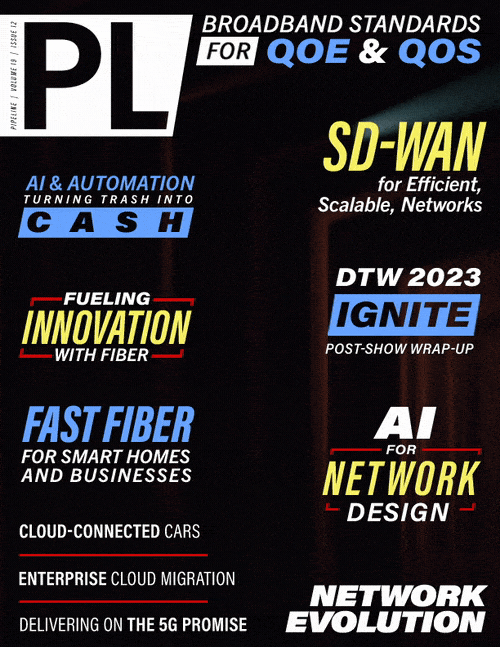The Key Role of Industry Standards
in Services-led Broadband
By: Craig Thomas
 From residential services like cloud gaming with VR headsets to business services and home-working with high upload demands, the average broadband service is made up of many different types of
broadband subscribers, all with different service requirements. Add in IoT, smart home devices, video streaming, and security controls, and it becomes clear that today’s broadband ecosystem is made
up of increasingly diverse devices, technologies, and services—all of which need enhanced Quality of Service (QoS) and Experience (QoE).
From residential services like cloud gaming with VR headsets to business services and home-working with high upload demands, the average broadband service is made up of many different types of
broadband subscribers, all with different service requirements. Add in IoT, smart home devices, video streaming, and security controls, and it becomes clear that today’s broadband ecosystem is made
up of increasingly diverse devices, technologies, and services—all of which need enhanced Quality of Service (QoS) and Experience (QoE).
Newer and increasingly interactive applications have made users aware that connectivity, higher speeds, and bandwidth is not enough to enjoy the full potential of their devices and services. This has sharpened the focus of the entire industry to increase the value of broadband to the end customer. Connectivity alone is no longer enough. Smarter Customer Premises Equipment (CPE), and cloud-based services that drive an “à la carte” and differentiated service offering at the touch of a button, will be essential for network operators to deliver superior QoE and secure the new revenue opportunities at their disposal.
Taking customer QoE into consideration
Because our “always on,” ultra-connected lifestyle demands so much more from our networks, QoE can no longer be ignored. The International Telecommunication Union (ITU) defines QoE as "the overall acceptability of an application or service, as perceived subjectively by the end-user." QoE is a measurement used to help understand and analyse the individual experiences of actual users when they interact with an application or service.
When broadband speed and bandwidth is no longer an inhibitor, QoE will be regarded with equal importance or even as more important. As traditional revenue steadily declines, the majority of employers are willing to adopt home-working and harness new revenue models that keep residential broadband and the home worker separate.
The emergence of applications such as Virtual Reality (VR), Augmented Reality (AR), the metaverse, and other high-bandwidth, latency-sensitive applications have the potential to place tremendous strain on broadband networks. Equally, using connected devices and networks to store and share sensitive data has exposed end-users to a greater threat landscape, as well as highlighted the network-based security solutions needed to secure both the device and the network it is on. The main challenge for operators is having the ability to manage this wide spectrum of devices and services, along with the varying requirements they bring.
This has shifted the focus of future broadband towards a services-led approach, and as a result, networks must become more sustainable. The industry must take an innovative approach to shift from typically connection-based broadband to a service-orientated ecosystem, and the requirements across the network to deliver an end-to-end QoE service model.
Industry standards: dealing the interoperability hand
Broadband and telecoms decision makers across the globe need to collaborate and create an interoperable ecosystem to ensure that the future investment needs of service providers are addressed, and greater value ultimately delivered to residential and business subscribers.
Relevant industry standards that support the current and future investments needed for the entire broadband ecosystem are critical, to arm service providers across the globe with a clear understanding of the best practices, architectures, and new technologies. Standards provide a common framework that can ensure a service providers’ network and service deployments are both proven and leverage a truly multi-vendor approach. This allows service providers to avoid vendor “lock-in” and marries the best of regulatory requirements, vendor solutions, open-source software, and open standards.
Industry standards are going to play a significant role moving forward when it comes to making deployments easier, increasing multi-vendor network interoperability, and supporting the wider broadband community. This will be beneficial to end users who will experience the QoE they desire for a range of different applications such as those in the connected home. Once vendors’ products are trusted and proven, operators and equipment manufacturers can act with confidence, knowing that their products meet


















